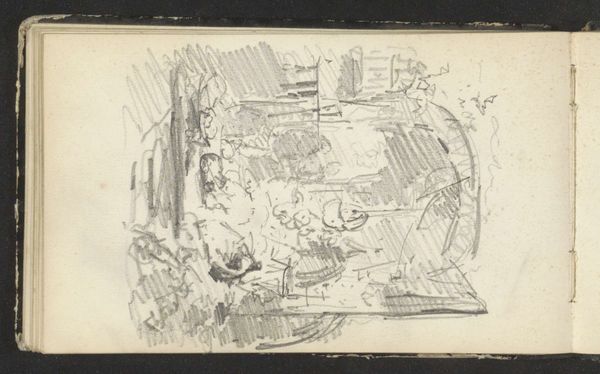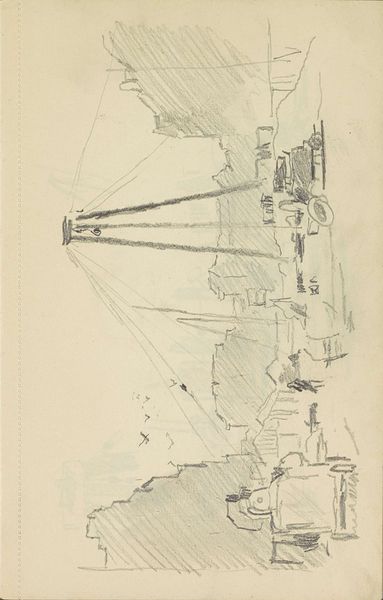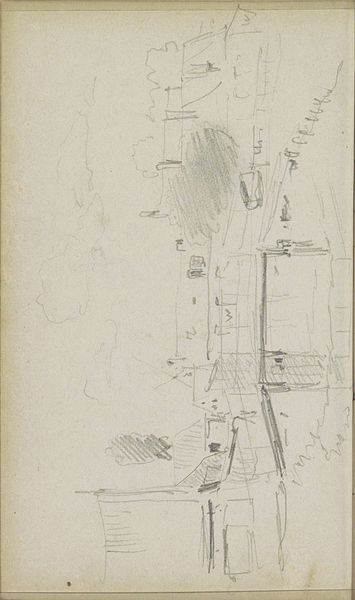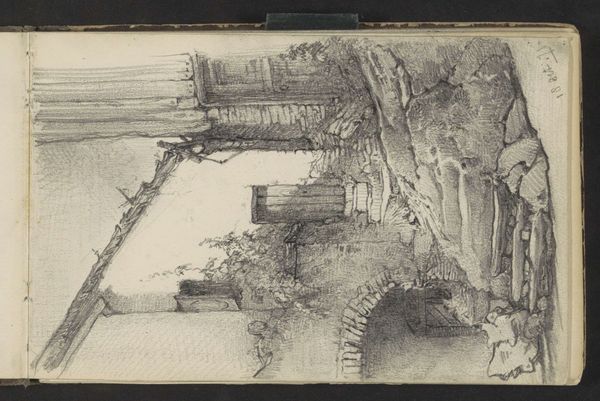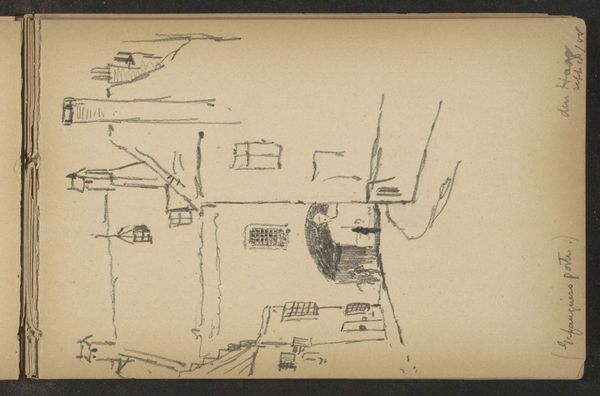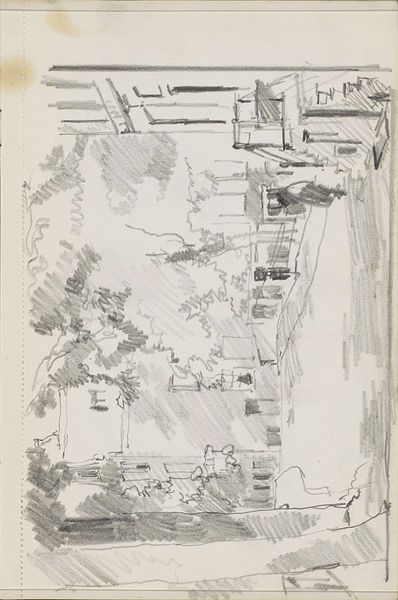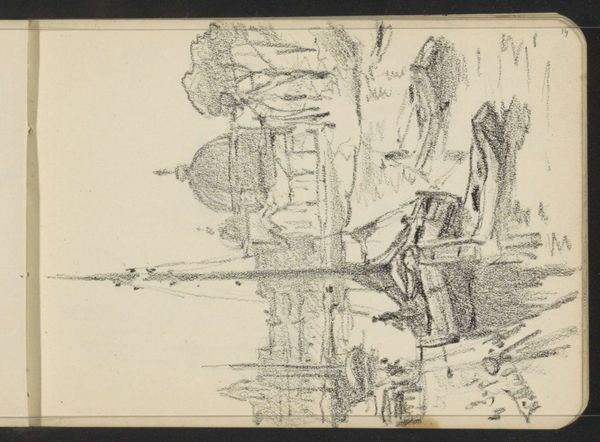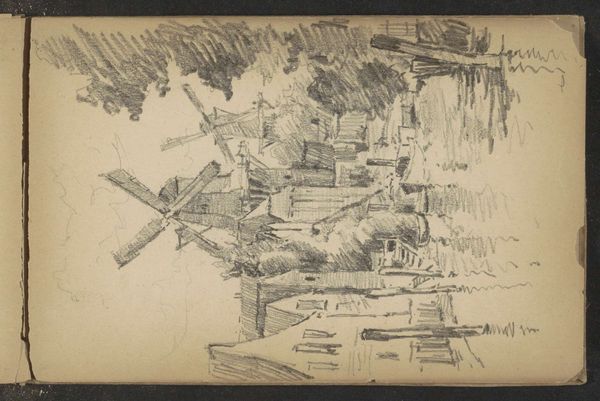
drawing, pencil
#
drawing
#
impressionism
#
pen sketch
#
sketch book
#
landscape
#
personal sketchbook
#
sketchwork
#
ink drawing experimentation
#
pen-ink sketch
#
pencil
#
pen work
#
sketchbook drawing
#
storyboard and sketchbook work
#
sketchbook art
#
realism
Copyright: Rijks Museum: Open Domain
Editor: Here we have "Molen De Roos te Delft," a pencil drawing from 1888-1889 by Alexander Shilling. There's a real sense of immediacy here, like a fleeting impression captured quickly in a sketchbook. What catches your eye when you look at this piece? Curator: The first thing that whispers to me is that sense of transience you picked up on. This isn’t a grand, finished statement. It's more like a visual diary entry. I'm drawn to how Shilling isn’t afraid to leave lines unfinished, letting the eye fill in the gaps. See how the blades of the windmill are suggested rather than fully described? It's like memory itself. The further something recedes, the more fragmented it becomes. Have you ever stood somewhere and suddenly had a flood of fragmented memories of childhood rush at you? Editor: I have! It's almost overwhelming, the jumble of sensations and images. Curator: Exactly! Shilling seems to tap into that here. Also, notice the juxtaposition of the industrial windmill against the organic shapes of the trees. There's a tension there, a quiet commentary perhaps on the changing landscape of the time. Does it make you feel like things are static, or are they changing? Editor: Definitely changing. It feels like the march of progress, maybe with a hint of melancholy for what's being lost. I love how a simple sketch can evoke such complex ideas. Curator: Indeed! It's a reminder that art isn’t always about flawless execution; sometimes it's about capturing a feeling, an idea, a moment in time. Even a fragmented one. Editor: Absolutely. It’s made me rethink what I consider ‘finished’ in a piece of art. Thank you.
Comments
No comments
Be the first to comment and join the conversation on the ultimate creative platform.

